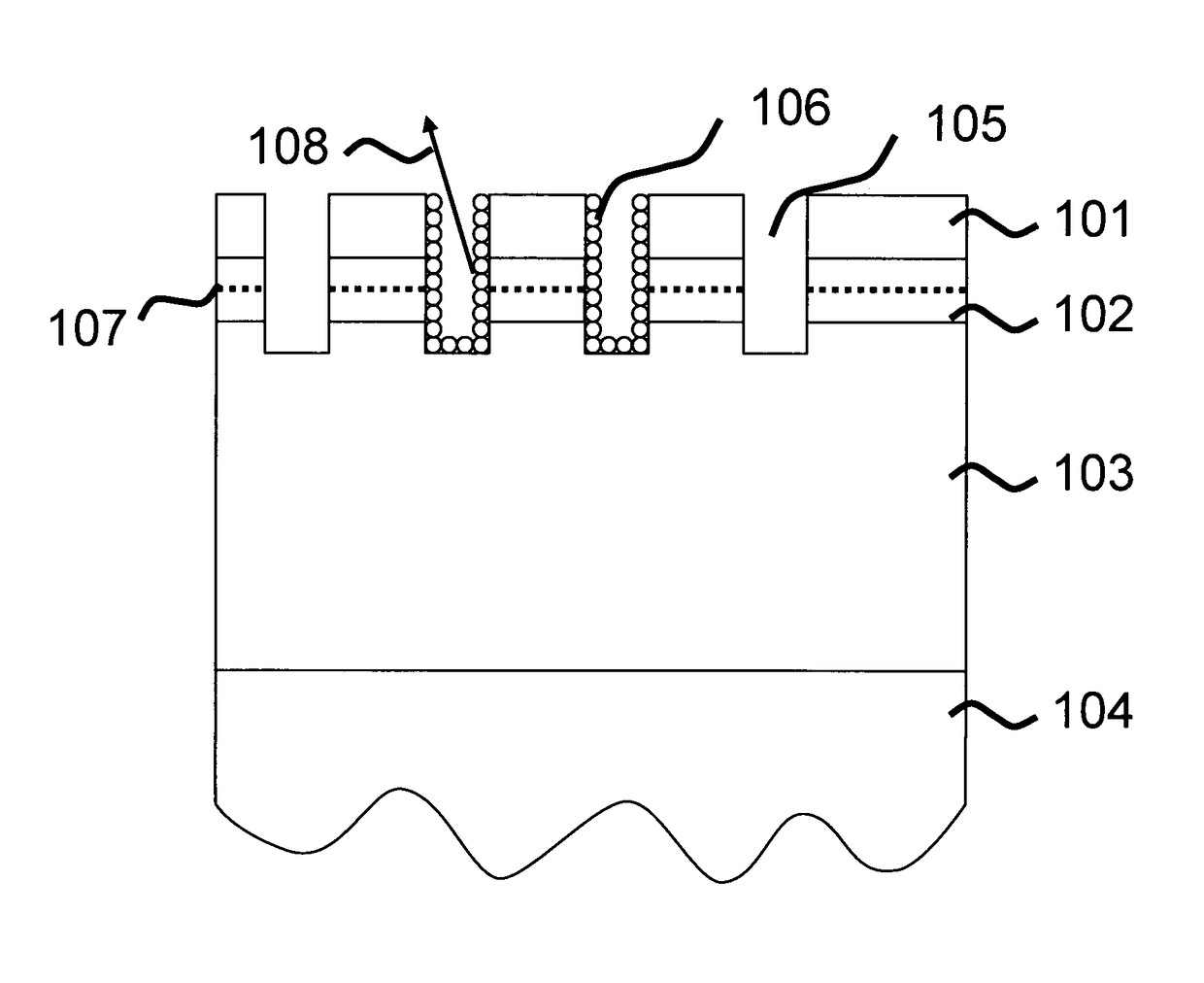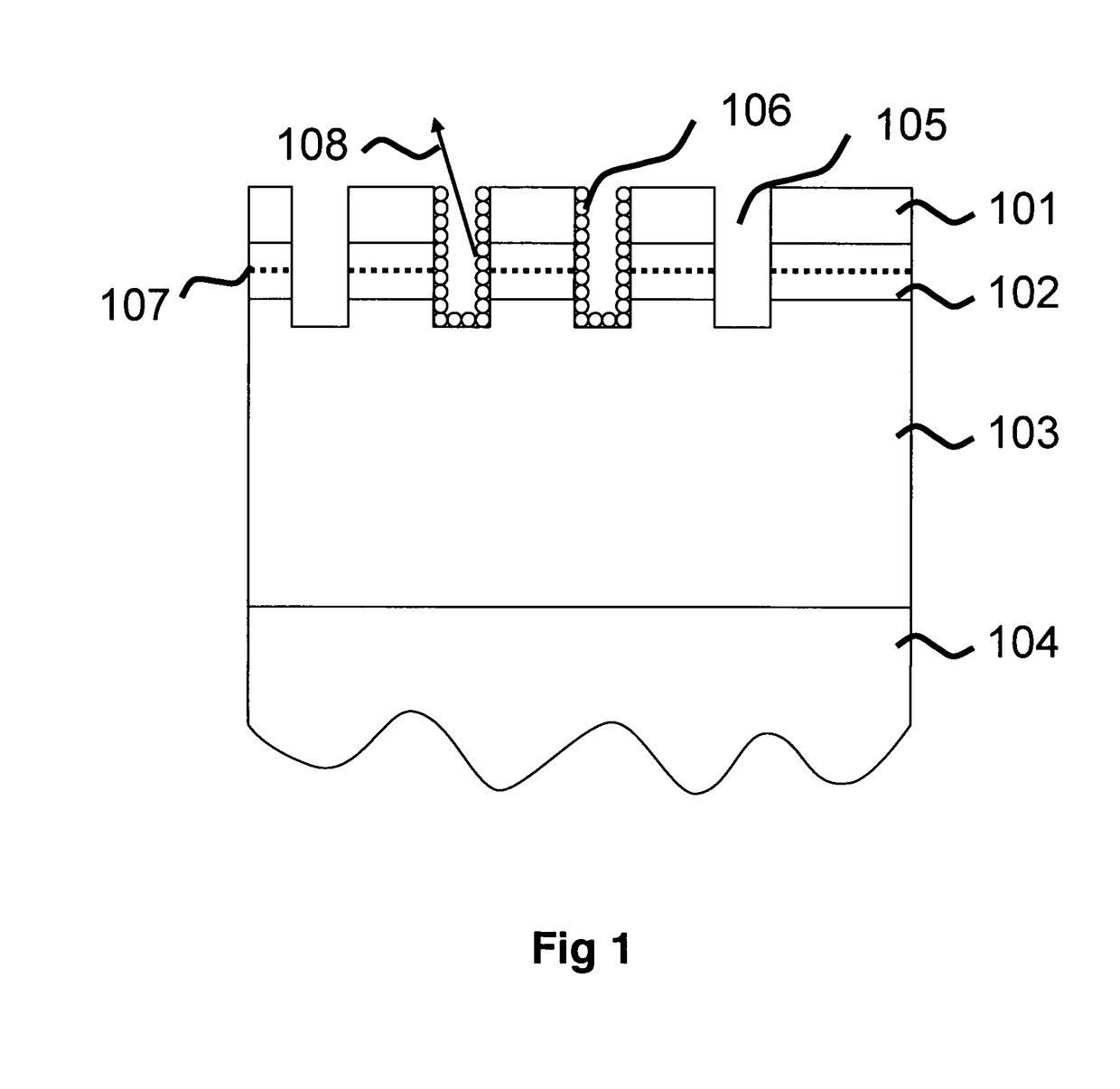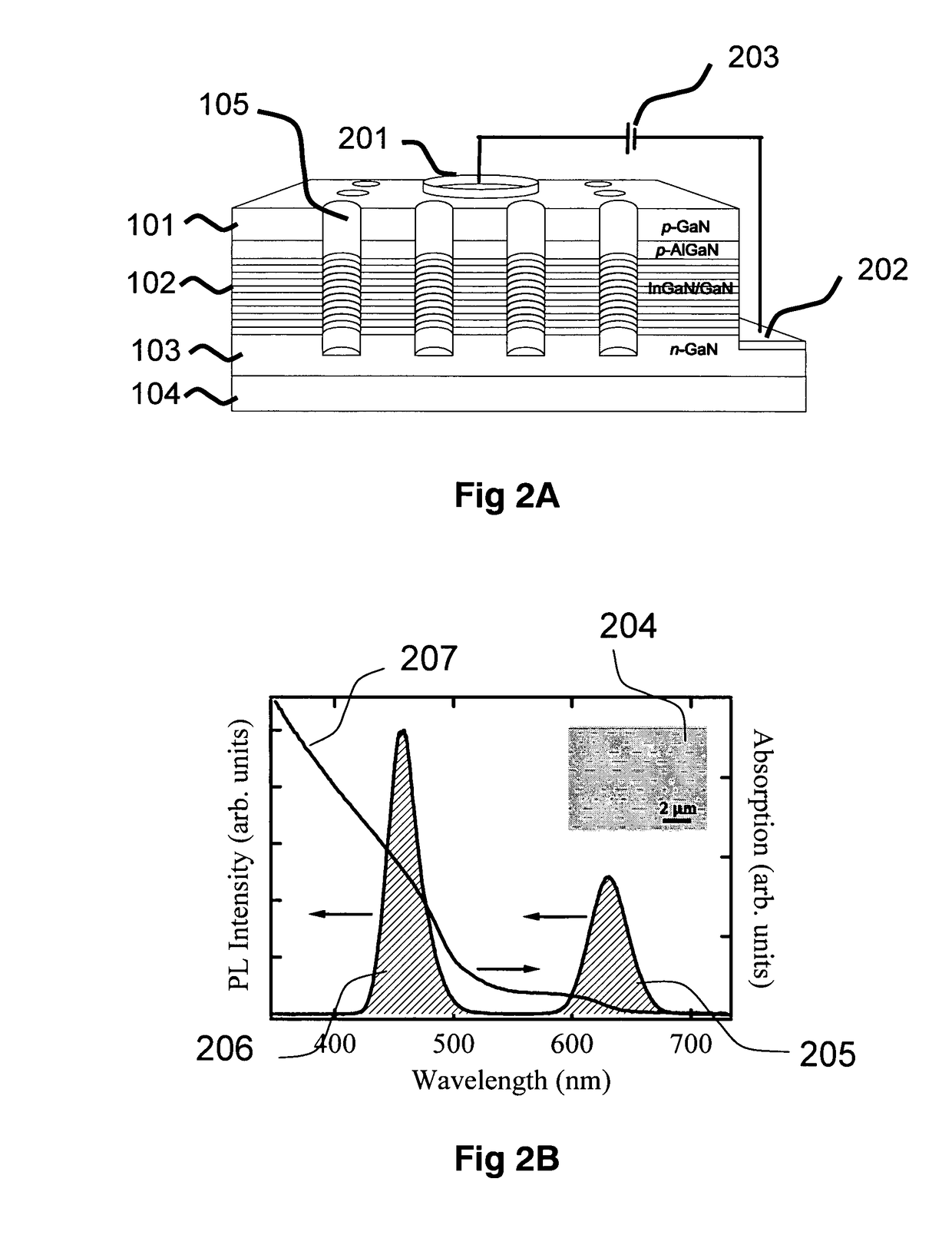Optical device
a technology of optoelectronic devices and optical components, applied in the direction of solid-state devices, electrical devices, photovoltaic energy generation, etc., can solve the problems of further constraints on design, impact cost, and pitaxial defects in conventional, point, thread and dislocation defect types, so as to simplify optical design of structures, reduce angular cones, and high directionality
- Summary
- Abstract
- Description
- Claims
- Application Information
AI Technical Summary
Benefits of technology
Problems solved by technology
Method used
Image
Examples
first embodiment
of a Light Harvesting Device Incorporating a p-n Junction
[0168]For purpose of example we now discuss in detail the practical implementation and demonstration of the first embodiment of the present invention as a light harvesting device with reference to the figures whereby the composite enclosing structure incorporates a single p-i-n junction as the energy transfer region in a configuration, leading to strong enhancement of the measured photocurrent. The excited state energy of the deposited NCs is efficiently transferred to a patterned bulk heterostructure by means of nonradiative energy transfer. Electron-hole pairs transferred to the heterostructure are subsequently separated by the built-in electric field and are collected by the electrodes resulting in electrical current.
[0169]The semiconductor bulk heterostructure used in this example offers higher carrier transport than the QW heterostructure in the previous example. In this configuration, wide absorption range and high oscil...
second embodiment
of the Invention
[0178]In a second embodiment of the invention (where the refractive index of the enclosing structure shown in FIG. 1 (101-103) is larger than that of the shaped structures shown in FIG. 1 (105), a large proportion of emitted light becomes reflected back from the side walls of the shaped structures, due to Fresnel reflection at the low to high refractive index boundary at the surface interface, such that each shaped structure acts predominantly as a reflective cavity for light emitted from (or collected by) the light emitting (or light absorbing) particle providing further beneficial effects as will now be described.
[0179]FIG. 13 shows in more detail the process of light emission from the optically responsive particle under such circumstances. A light ray (1301) emitted from a optically responsive particle (106) placed in close proximity to the energy transfer region (107), radiating towards the direction of the proximal heterostructure, becomes predominantly reflecte...
third embodiment
of the Invention
[0196]In a third embodiment of the invention, the enclosing structure incorporates a number of energy transfer regions perforated by a shaped structure (FIG. 21) such that more than one energy transfer region (2101) participates in the non-radiative energy transfer process to or from the colloidal nanoparticles. In this embodiment of the invention emission power (brightness), or collection efficiency, scales with number of perforated quantum wells.
PUM
 Login to View More
Login to View More Abstract
Description
Claims
Application Information
 Login to View More
Login to View More - R&D
- Intellectual Property
- Life Sciences
- Materials
- Tech Scout
- Unparalleled Data Quality
- Higher Quality Content
- 60% Fewer Hallucinations
Browse by: Latest US Patents, China's latest patents, Technical Efficacy Thesaurus, Application Domain, Technology Topic, Popular Technical Reports.
© 2025 PatSnap. All rights reserved.Legal|Privacy policy|Modern Slavery Act Transparency Statement|Sitemap|About US| Contact US: help@patsnap.com



